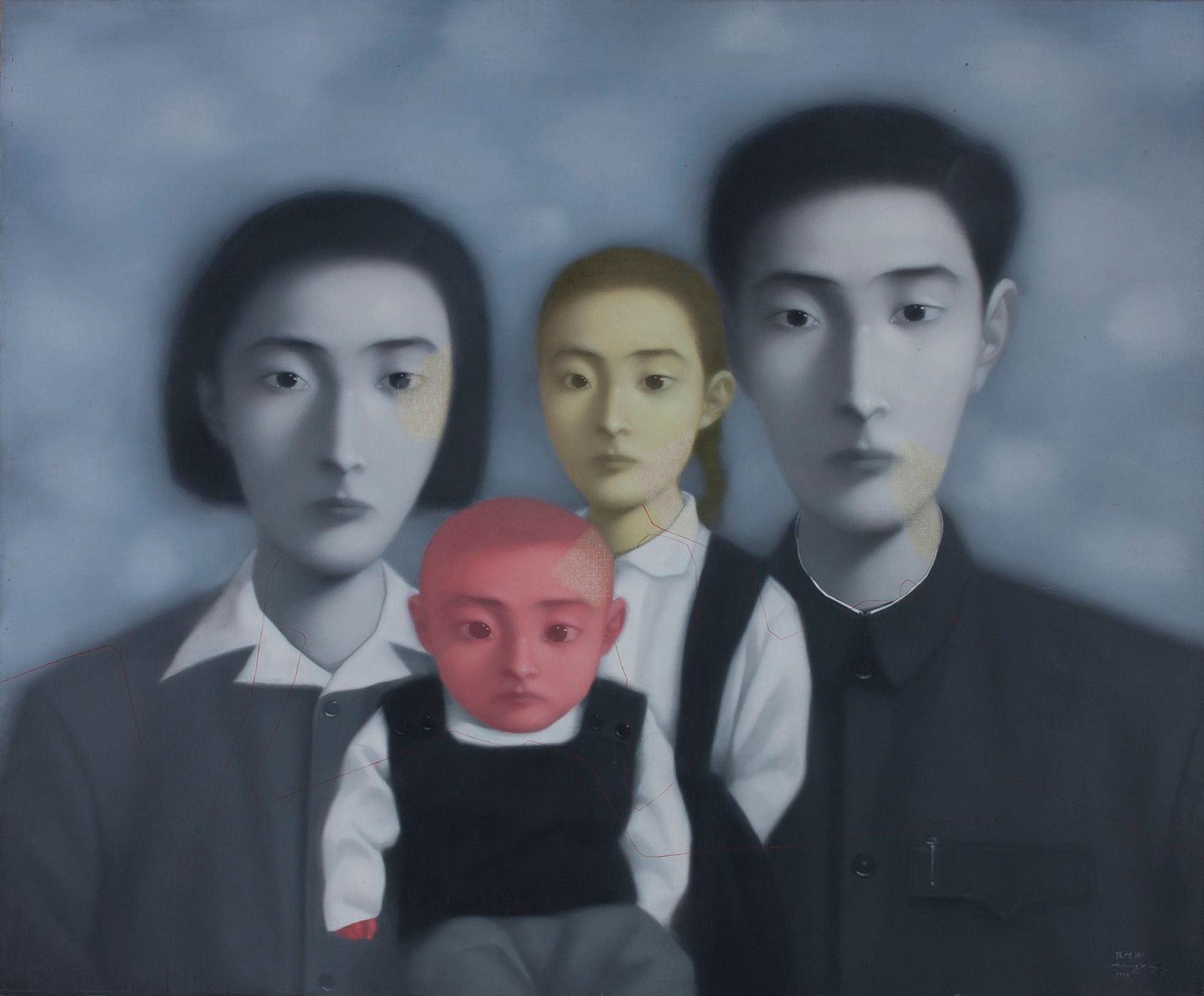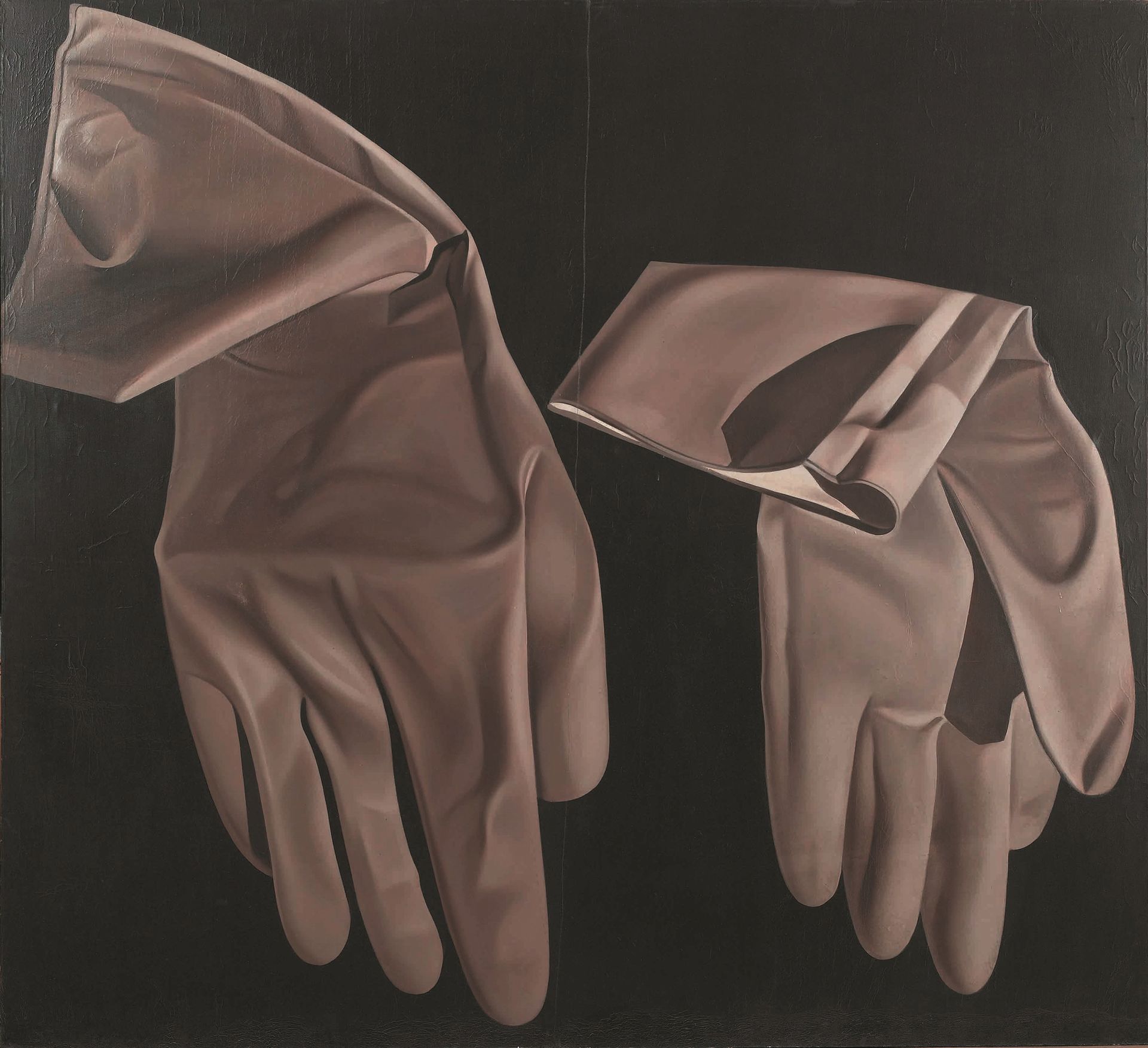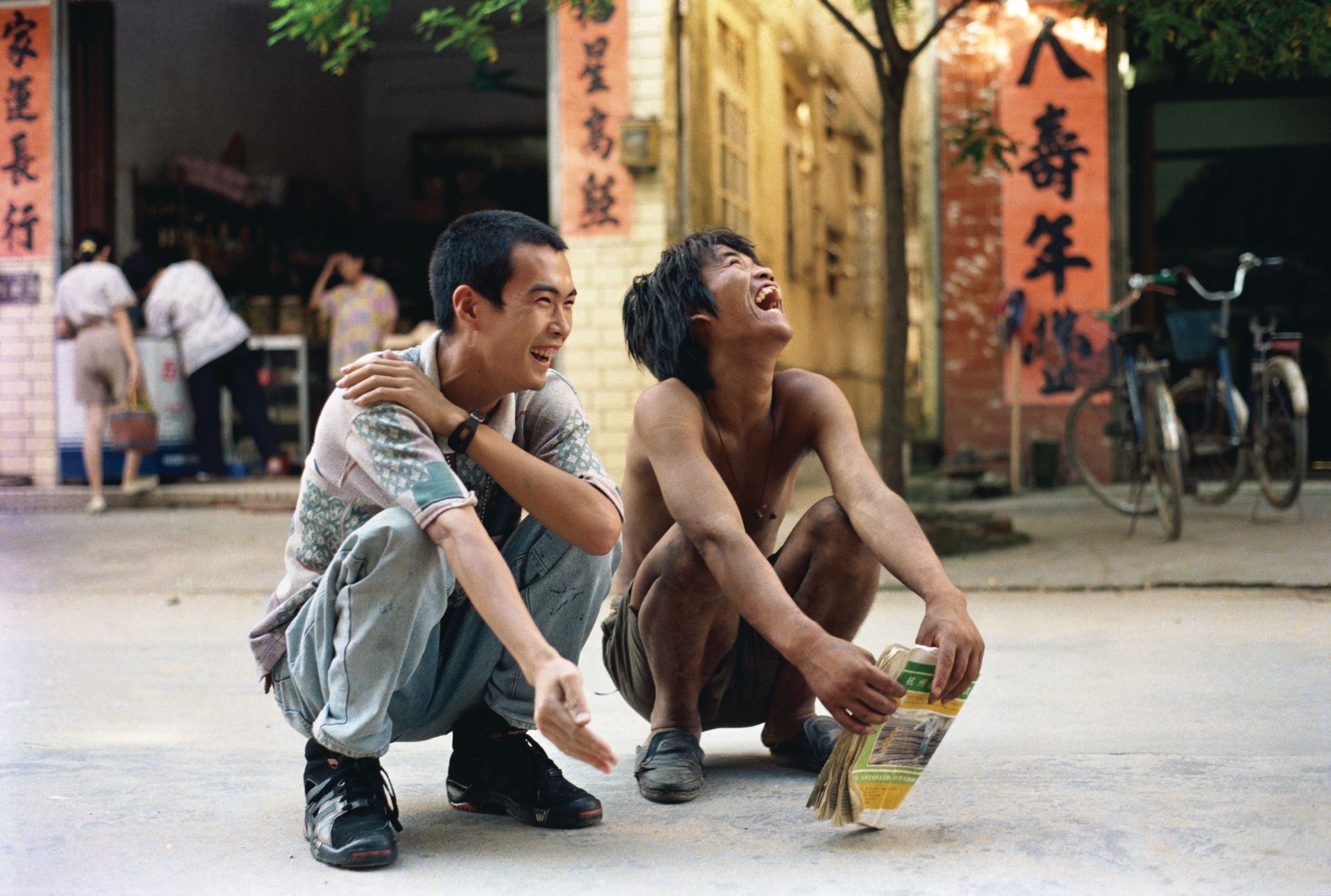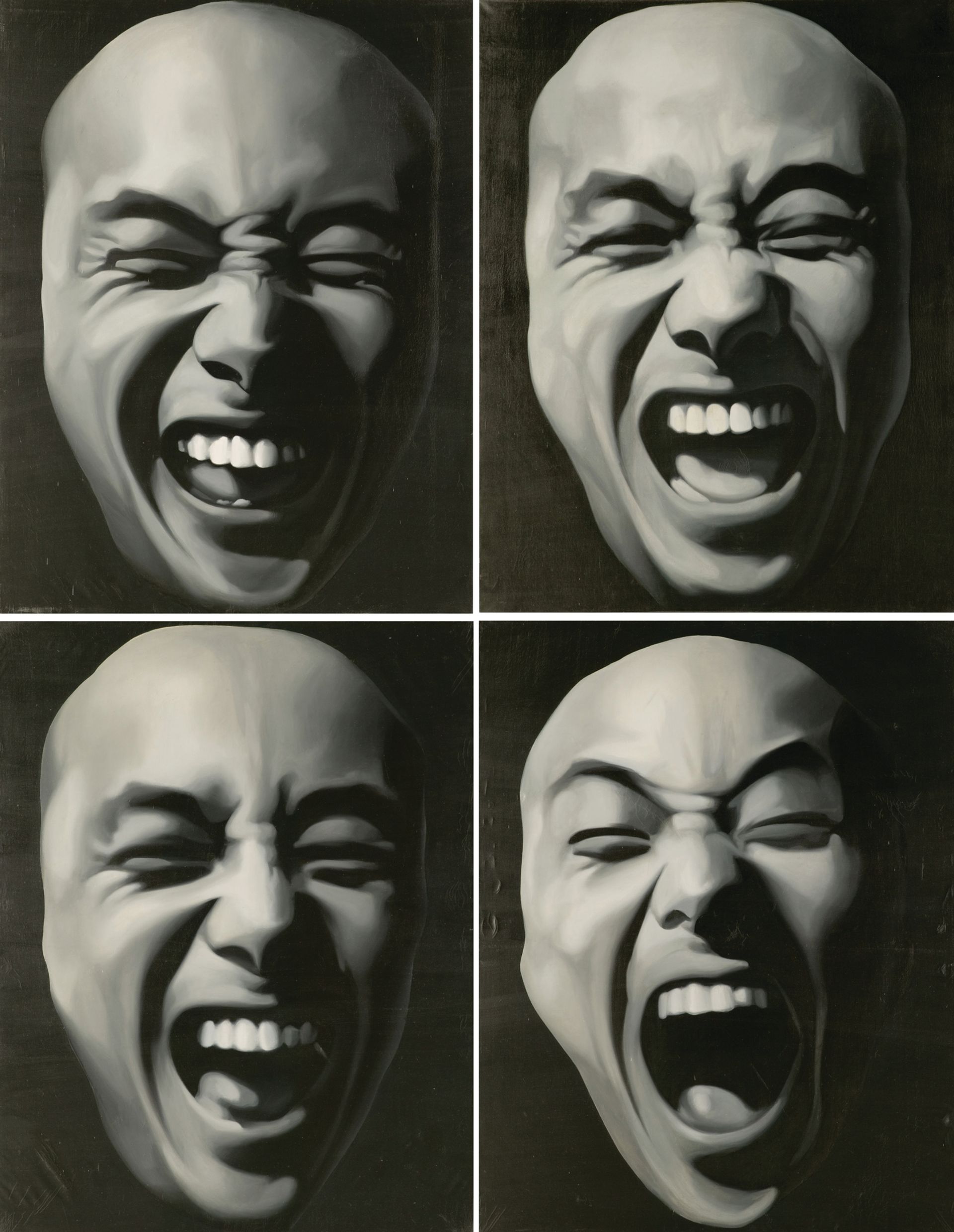The exhibition M+ Sigg Collection: Four Decades of Chinese Contemporary Art, held at Artis Tree (until 5 April), provides visitors with an introduction to the founding collection of Hong Kong’s museum of visual culture. Pi Li, the Sigg senior curator of M+, who has organised the exhibition, chooses six key works from the 80 now on show. These are drawn from the 1,463 works that Uli Sigg donated and another 47 that he sold in 2012, after more than 20 years of collecting and researching China’s contemporary art.
Liu Wei, It Looks Like a Landscape (2004)
After the 2004 Shanghai Biennale panel rejected several of his proposals, Liu Wei submitted this photograph featuring buttocks and body hair, which—to his surprise—was accepted. He went outside his usual preferred media of installation, painting and video to create this seemingly classical landscape, which mocks arbitrary institutional standards. Its monumental size is in contrast to the traditional handscroll, where viewing is an intimate and personal act. His artistic practice is primarily concerned with the changing cityscape and contemporary issues stemming from globalisation.

Zhang Xiaogang Bloodline Series— Big Family No. 17-1998 (1998)
In 1993, Zhang Xiaogang began the Bloodline series, which comprises some of the most recognisable images in Chinese contemporary art. His discovery of family photographs—thought to have been lost because many albums were destroyed during the Cultural Revolution—inspired these paintings. In the series, he makes little distinction between male and female facial features, suggesting an indifference to individuality. Zhang established a clear identity as an artist by shedding Western aesthetics to focus on personal narrative and collective memory.

Zhang Peili X? Series: No. 4 (1987)
This monochrome painting of medical latex gloves is from Zhang Peili’s X? series, for which he aimed to produce dozens of nearly identical paintings by reducing technical and compositional changes to a minimum, to make the works seem like prints. In the end, he created around ten, but he also wrote a manual with rules for reproducing the series. The mechanical approach and clinical subject challenge Modernist ideas of art as self-expression. In 1986, Zhang and Geng Jianyi co-founded the artist group Pond Society, in Hangzhou. The collective’s goal was to deliver art from an academic context into public space through happenings, installations and collaborative works.

Zheng Guogu Me and My Teacher (1993)
In this photograph, Zheng Guogu and a dishevelled, homeless young man are shown laughing while squatting on the street. It is part of a project in which the artist befriended the mentally unstable man in his hometown, Yangjiang. After following him for a period of time, the artist came to regard the marginalised man as a teacher. Geng Jianyi The Second Situation 1987 In these portraits, which resemble a series of photographic images taken in slow motion, Geng Jianyi analyses human expression by breaking down the act of laughing into four stages. His technical approach reflects a rational re-examination of the passions of the 85 New Wave. Geng co-founded the Pond Society in 1986, and co-organised the 85 New Space exhibition with Zhang Peili.

Geng Jianyi
The Second Situation 1987
In these portraits, which resemble a series of photographic images taken in slow motion, Geng Jianyi analyses human expression by breaking down the act of laughing into four stages. His technical approach reflects a rational re-examination of the passions of the 85 New Wave. Geng co-founded the Pond Society in 1986, and co-organised the 85 New Space exhibition with Zhang Peili.

Zhang Wei Fusuijing Building (1975)
This small landscape documents the scene outside the window of Zhang Wei’s apartment in central Beijing, where the pioneering No Name Group’s first exhibition took place in 1979. The perspective suggests that the artist was looking from a dark interior on to an open street outside, alluding to the underground status of the collective during that period. Zhang’s early works from the 1970s reflect the lack of artistic freedom during the Cultural Revolution, when art was mainly made for propaganda and political purposes.

